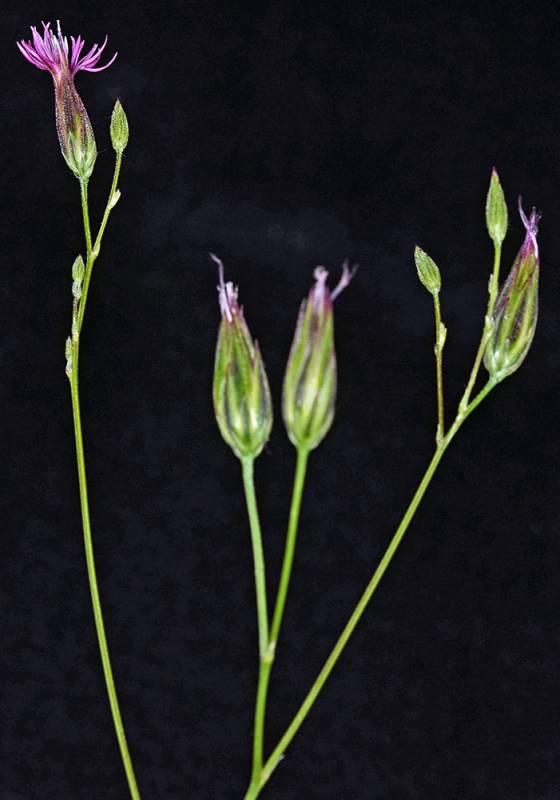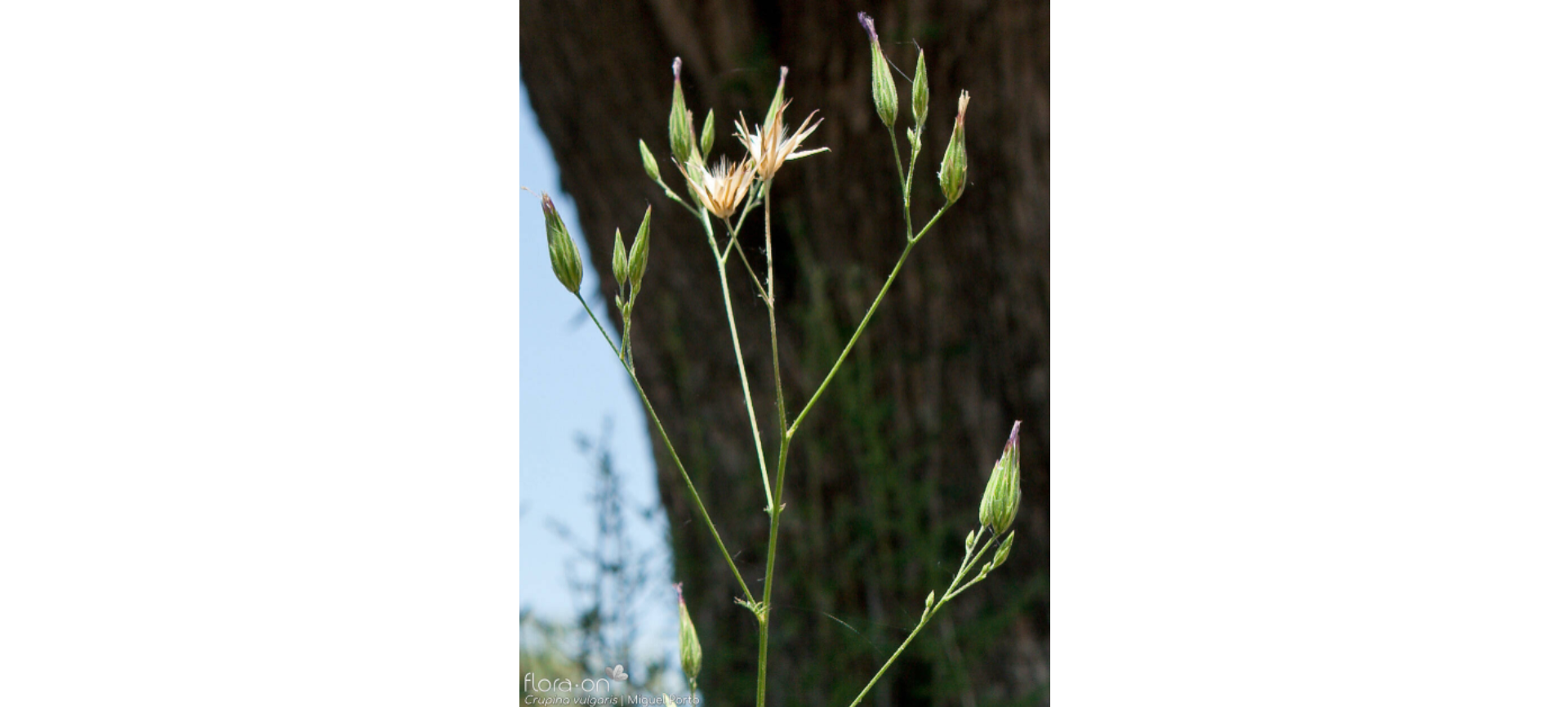Common crupina identification and control
About this weed
Common crupina is a regulated Class A noxious weed in King County. This means control is required state-wide. Common crupina is also on the Washington quarantine list meaning it is illegal to buy, sell, or offer it for sale in the state.
Common crupina is known as Crupina vulgaris and it is in the aster (daisy) family.

Why it’s a problem
Common crupina is adapted to a wide range of soil and climate conditions. It can be found in a variety of habitats including fields, roadsides, and forests up to 3,200 feet (around 1000 meters).
This noxious weed can form solid stands, decreasing native grasses and plants eaten by livestock and other animals. Common crupina is federally listed as a noxious weed.
Plant description
Common crupina is native to Eurasia. It is not often seen in Washington state. The only known sites are in Chelan County, near the town of Stehekin.
Common crupina grows 1-3 feet. It is a winter annual. This means that it germinates in autumn, lives through the winter, and produces seed and dies in the following season.
Common crupina has alternate leaves. The leaves do not grow directly across from each other but instead, alternately down the stem. The leaves are finely divided into lace-like leaflets.
Leaves and stems have a short, stiff spine.
Flowers are lavender to purple and grow in one-half inch long heads. Each plant can have as many as 40 flowering heads, with individual heads producing up to 5 seeds.







Be aware of look-alike plants
Common crupina can be confused with spotted knapweed.
When in doubt, take photos and share them with us or report them on iNaturalist.
What to do if you find it
Property owners are required to control common crupina on lands that they manage. Please let us know if you see common crupina growing in King County. We map all known locations of regulated noxious weeds to help locate new infestations in time to control them.
Our program staff can provide you with site specific advice on how to remove it. If you need site specific recommendations for other counties in the state of Washington, contact your local weed board.
Control methods
We recommend using a combination of methods to control noxious weeds. In areas with few weeds, it is important to act quickly before they become harder to control. Make a long-term plan as it often takes several years to get rid of most weeds. Start in the least infested areas first and then move into more heavily infested areas.
Cultural control
After removing the weeds, consider covering the area with mulch and/or replanting with beneficial and/or native species.
Burning is not recommended because common crupina populations increase after a fire. This is due to the nutrient release and light exposure.
Manual control
Small infestations can be controlled by hand pulling or digging. However, this requires regular site visits (every 3 weeks or so) as this weed produces many seeds.
When digging, sever the root below the soil surface. Remove plants before they produce seeds.
Mechanical control
Plants regrow after mowing and this can also increase seed production.
Tilling can control emerged plants but also increase seed production.
Chemical control
Stay safe when using herbicide:
- Always read the label before use.
- Wear a long-sleeved shirt, long pants, shoes, and eye protection.
- Follow state and local regulations.
Herbicide may be useful for large infestations.
Picloram is considered to be the best product to use for controlling common crupina. Glyphosate and Dicamba are other options that will work for control.
If you are qualified to do so or if your infestation is not near the water’s edge, follow these general best management practices:
- Apply to seedlings in spring when plants are actively growing
- Take care to avoid desirable plants
- Follow the product label and all laws and regulations regarding herbicide use on the site
If the site is wet or along the water's edge, you must use aquatic-approved products. A permit may also be needed from the state Department of Ecology. Contact us for permitting information or information on hiring a licensed aquatic weed contractor.
PNW Pest Management Handbook is a great resource for up-to-date and specific method for chemical control.
Disposal instructions
Place plants in sturdy garbage bags. If plants are in seed, carefully cut off the seed head and place in a bag without dispersing the seeds.
You can dispose of common crupina plants in household garbage or take to a transfer station for disposal.
Do not put plants in compost or yard waste bins. Never dump plant material in parks or natural areas because weeds can spread from yard waste piles.
Noxious Weed Disposal - Washington State Noxious Weed Control Board

 Translate
Translate